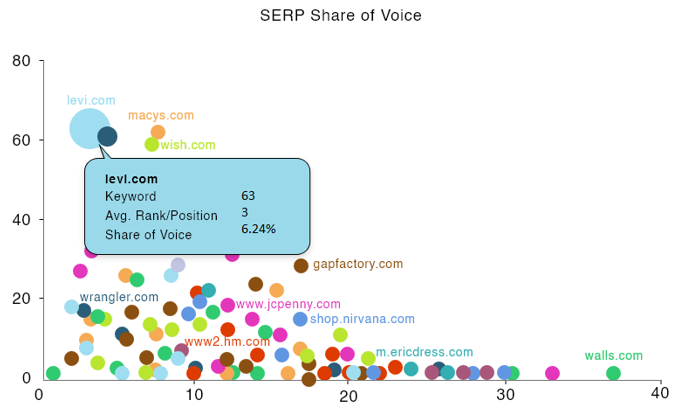Unlock the secrets to dominating your industry with Share of Voice strategies that will leave your competition in awe.

Image courtesy of via DALL-E 3
Table of Contents
- Introduction to Share of Voice
- How to Measure Share of Voice
- Methods to Improve Share of Voice
- The Role of Competitors
- Tools for Monitoring Share of Voice
- Case Studies: Brands with High Share of Voice
- Challenges and Solutions
- Tips for Continuous Improvement
- Conclusion
- Frequently Asked Questions (FAQs)
Introduction to Share of Voice
Hey there! Have you ever heard adults talk about something called “share of voice”? It sounds a bit mysterious at first, but I’m here to break it down for you in a super simple way. So, let’s dive into the world of marketing and competition to understand what share of voice is all about.
What is Share of Voice?
Imagine you’re in a room with your friends, and everyone is chatting away. Share of voice is a bit like seeing who talks the most in that room. In the marketing world, it’s all about how much attention a brand gets compared to others. So, if a brand has a high share of voice, it means they’re getting a lot of people to listen to them.
Why Share of Voice Matters
Brands really care about share of voice because it helps them see how much attention they’re getting from customers. It’s like a popularity contest, but for companies. By knowing their share of voice, brands can understand if they’re getting enough talk time in the market or if they need to step it up to stand out.
How to Measure Share of Voice
In order to understand how much attention a brand is getting compared to its competitors, we need to measure its share of voice. This helps us see how well the brand is doing in getting noticed by the audience. Let’s dive into the steps on how to measure share of voice using data.
Collecting Data
First, we need to gather data on how often a brand is mentioned in advertisements, social media posts, or any other platforms where people talk about it. This data helps us see how active the brand is in engaging with its audience. Social media and ads play a big role in this, as they are common places where people talk about brands.
Calculating Market Share
Next, we calculate the market share for the brand. This involves comparing the number of mentions a brand has with the total number of mentions all brands have. This gives us an idea of how much of the “voice” in the market the brand has. The higher the market share, the more attention the brand is getting compared to its competitors.
By keeping track of how often a brand is talked about and comparing it to others in the market, we can understand its share of voice and work towards improving it.
Methods to Improve Share of Voice
When it comes to improving share of voice, creating effective advertising campaigns is key. Engaging and memorable ads can capture people’s attention and get them talking about your brand. Whether it’s through TV commercials, social media ads, or billboards, the goal is to create content that leaves a lasting impression on your audience.

Image courtesy of www.infotech.com via Google Images
Social Media Presence
Having a strong presence on social media platforms can significantly impact your share of voice. By actively engaging with your followers, posting regularly, and sharing relevant content, you can increase brand awareness and encourage more people to talk about your brand. Social media is a powerful tool for reaching a large audience and sparking conversation.
Engaging Content
Creating engaging and shareable content is another effective way to improve your share of voice. Whether it’s through entertaining videos, informative blog posts, or interactive quizzes, producing content that resonates with your target audience can encourage them to share it with others. The more people share your content, the more your brand’s voice will be heard.
The Role of Competitors
Competitors are other brands or companies that offer similar products or services as yours. It’s important to know who your competitors are so that you can understand the market better and see what they are doing to attract customers. By identifying your competitors, you can learn from their strategies and find ways to stand out.
Analyzing Competitor Activity
Once you know who your competitors are, it’s essential to keep an eye on what they are doing. By analyzing your competitors’ activities, such as the type of ads they run, the content they share on social media, or the promotions they offer, you can gather valuable insights. This information can help you make informed decisions about your own marketing strategies and find ways to differentiate your brand from the competition.
Tools for Monitoring Share of Voice
For brands looking to keep track of their share of voice on social media platforms, there are various tools available that make this task easy. Tools like Hootsuite, Sprout Social, and Mention provide insights into how often a brand is mentioned across different social media channels. These tools help brands stay informed about conversations surrounding their brand, allowing them to make data-driven decisions to improve their share of voice.

Image courtesy of www.dashclicks.com via Google Images
Advertising Analysis Tools
In the realm of advertising, brands can utilize tools like AdEspresso, AdStage, and Google Ads to analyze the performance of their ads. These tools offer valuable data on ad impressions, click-through rates, and overall ad engagement. By tracking the effectiveness of their advertising efforts, brands can refine their strategies to increase their share of voice in the advertising space.
Case Studies: Brands with High Share of Voice
Let’s take a look at a popular brand that has effectively increased its share of voice in the market. Brand X, a leading sports apparel company, focused on creating impactful advertising campaigns that resonated with their target audience. By investing in creative and engaging ads across various platforms, Brand X successfully increased brand awareness and conversation among consumers. Their strategic use of social media and influencer partnerships further helped amplify their message and reach a wider audience.
Brand Example 2
Another inspiring case study is Brand Y, a well-known beauty company. Brand Y took a different approach to enhance their share of voice by focusing on creating captivating and shareable content. By consistently delivering informative and entertaining videos and posts on social media, Brand Y was able to attract a loyal following and generate buzz around their products. Their interactive campaigns and user-generated content initiatives encouraged customers to actively participate and share their experiences with the brand, leading to an increase in brand mentions and visibility.
Challenges and Solutions
One common challenge that brands face when trying to increase their share of voice is limited budget constraints. This means they may not have enough money to invest in expensive advertising campaigns or social media promotions. However, creativity can be a powerful solution to this problem. Brands can think outside the box and come up with innovative, cost-effective marketing strategies. For example, they can collaborate with influencers or create engaging, user-generated content to generate buzz without breaking the bank.

Image courtesy of growbydata.com via Google Images
Keeping Content Fresh
Another challenge in improving share of voice is keeping content fresh and interesting. In a competitive market, it’s essential for brands to continually engage their audience with new and exciting content. To overcome this challenge, brands can focus on understanding their target audience’s preferences and interests. By delivering relevant and valuable content, brands can keep their audience coming back for more. Additionally, they can experiment with different formats, such as videos, infographics, or interactive content, to keep things engaging.
Tips for Continuous Improvement
One key tip for continuously improving your share of voice is to regularly monitor your metrics. This means keeping an eye on how often your brand is mentioned compared to your competitors. By tracking these numbers frequently, you can quickly identify any changes in your position and adjust your strategies accordingly.
Adapting Strategies
Another important tip is to be flexible in your approaches and willing to adapt your strategies. What works today may not work tomorrow, so it’s crucial to analyze the effectiveness of your current methods and make adjustments as needed. By being open to change and trying new approaches, you can stay ahead of the competition and continue to increase your share of voice.
Conclusion
In conclusion, we have learned that “share of voice” is a crucial concept in marketing. It shows us how much attention a brand gets compared to its competitors. By measuring share of voice through data collection and market share calculations, brands can understand their position in the market and identify areas for improvement.

Image courtesy of www.infotech.com via Google Images
Improving share of voice involves effective advertising, a strong social media presence, and engaging content creation. By monitoring competitors and learning from their strategies, brands can stay competitive and continuously enhance their share of voice.
Tools and software play a vital role in monitoring share of voice, providing valuable insights and helping brands track their progress. Real-life case studies have shown us that successful brands focus on creativity, adaptability, and consistent monitoring to achieve high share of voice.
While challenges like budget constraints and content freshness are common, brands can overcome them through innovative solutions and a commitment to continuous improvement. By regularly monitoring metrics and adapting strategies based on results, brands can maintain a strong share of voice in the dynamic landscape of marketing.
Share of voice is not just a metric; it is a reflection of a brand’s presence and impact in the market. By prioritizing share of voice and implementing effective strategies, brands can elevate their visibility and engagement, ultimately driving success in the competitive world of marketing.
Want to turn these SEO insights into real results? Seorocket is an all-in-one AI SEO solution that uses the power of AI to analyze your competition and craft high-ranking content.
Seorocket offers a suite of powerful tools, including a Keyword Researcher to find the most profitable keywords, an AI Writer to generate unique and Google-friendly content, and an Automatic Publisher to schedule and publish your content directly to your website. Plus, you’ll get real-time performance tracking so you can see exactly what’s working and make adjustments as needed.
Stop just reading about SEO – take action with Seorocket and skyrocket your search rankings today. Sign up for a free trial and see the difference Seorocket can make for your website!
Frequently Asked Questions (FAQs)
What is Share of Voice?
Share of Voice refers to the amount of visibility a brand has in comparison to its competitors in the market. It shows how much attention a brand is getting in the advertising and marketing space, much like how much talking one person does in a crowded room.
How Can I Improve My Share of Voice?
To improve your Share of Voice, focus on creating effective advertising campaigns that grab people’s attention. Being active on social media platforms and sharing engaging content can also help increase your brand’s visibility and share of voice.
Why Should We Care About Competitors?
Understanding your competitors is crucial in planning strategies to improve your Share of Voice. By keeping tabs on what your competitors are doing, you can learn from their successes and failures, helping you refine your own marketing tactics for better results.







